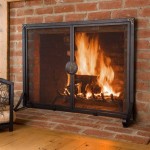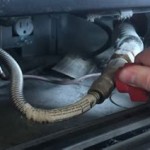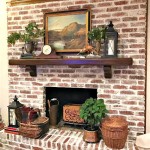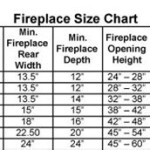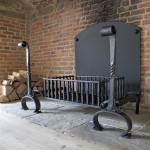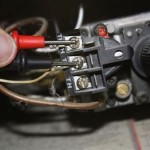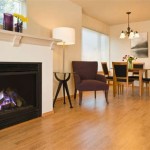Can You Cover a Brick Fireplace With Stone? A Comprehensive Guide
The desire to update a home's interior often leads to considering alterations to existing features. A brick fireplace, while a classic element, may not always align with current aesthetic preferences. Covering an existing brick fireplace with stone is a popular renovation option, promising a refreshed appearance and increased property value. However, the feasibility and success of such a project hinge on a variety of factors. This article will explore the considerations involved in covering a brick fireplace with stone, providing a detailed overview of the process, potential challenges, and essential preparatory steps.
Before embarking on this type of renovation, a thorough assessment of the existing fireplace structure is crucial. The structural integrity of the brick, the condition of the firebox, and the overall stability of the hearth must be evaluated. Any signs of damage, such as cracks, crumbling mortar, or water damage, must be addressed before proceeding. Neglecting these issues could compromise the safety and longevity of the stone overlay.
Furthermore, the type of fireplace (wood-burning, gas, or electric) will influence the project's complexity and required modifications. Wood-burning fireplaces, in particular, demand careful consideration regarding ventilation and fire safety. Gas fireplaces may necessitate adjustments to gas lines and venting systems, requiring the expertise of qualified professionals.
Assessing the Existing Fireplace Structure
The foundation of any successful stone overlay project is a sound structural base. A visual inspection of the brick fireplace should be the initial step. Look for cracks in the bricks themselves, as well as in the mortar joints. Minor hairline cracks can often be repaired with patching compounds, but larger cracks, especially those that run through multiple bricks, may indicate a more serious issue. Crumbling mortar joints, a common sign of aging and water damage, need to be addressed through a process called repointing, where the old mortar is removed and replaced with fresh mortar. This restores the structural integrity of the brickwork and provides a stable surface for the stone overlay.
Water damage is a significant concern for fireplaces, as it can weaken the brick and mortar and lead to mold growth. Check for discoloration, staining, or efflorescence (a white, powdery deposit) on the brick surface, as these are all telltale signs of water intrusion. Identifying the source of the water leak and addressing it is paramount before proceeding with any cosmetic upgrades. A leaky chimney, faulty flashing, or inadequate weatherproofing can all contribute to water damage.
The firebox, the area where the fire is actually built, also requires careful scrutiny. Check for cracks in the firebrick lining, as these can compromise the firebox's ability to contain the heat and protect the surrounding structure. Damaged firebricks should be replaced to ensure safe operation. The damper, a movable plate that controls the airflow in the chimney, should be inspected for proper functionality. A malfunctioning damper can lead to inefficient burning and increased risk of smoke entering the room.
Finally, assess the stability of the hearth, the non-combustible area in front of the fireplace opening. The hearth should be level and free from cracks or damage. If the existing hearth is inadequate in size or condition, it may need to be extended or replaced to meet current safety standards and accommodate the stone overlay.
Selecting the Appropriate Stone and Installation Methods
Choosing the right type of stone is a crucial decision that will impact the aesthetics, cost, and installation process of the project. Natural stone options include granite, slate, limestone, and fieldstone, each offering unique colors, textures, and durability characteristics. Manufactured stone veneer, also known as faux stone, is a lighter and more cost-effective alternative that mimics the appearance of natural stone. It is typically made from concrete or other composite materials and offers a wider range of styles and colors.
Consider the overall design aesthetic of the room when selecting the stone. A rustic, natural stone might complement a traditional or farmhouse-style home, while a sleek, modern stone veneer could be more suitable for a contemporary space. The size and shape of the stone should also be taken into account. Larger stones can create a dramatic statement, while smaller stones offer a more subtle and textured look.
The installation method will depend on the type of stone chosen and the condition of the existing brick surface. Generally, a layer of mortar is applied to the brick, and the stones are carefully placed and adhered to the mortar. Proper spacing and leveling are essential to achieve a professional-looking result. When using natural stone, it may be necessary to cut and shape the stones to fit around the fireplace opening and any existing architectural features. Manufactured stone veneer is often designed with interlocking edges, simplifying the installation process.
Preparing the brick surface is crucial for proper adhesion. The brick should be cleaned thoroughly to remove any dirt, dust, or loose debris. A bonding agent can be applied to the brick to improve the adhesion of the mortar. If the brick surface is particularly smooth or non-porous, it may be necessary to roughen it up with a wire brush or grinder to create a better surface for the mortar to grip.
Mortar selection is also important. A type S mortar is generally recommended for stone veneer applications, as it provides good bonding strength and resistance to water penetration. The mortar should be mixed according to the manufacturer's instructions and applied evenly to the brick surface. When installing the stone, apply pressure to ensure good contact with the mortar and maintain consistent spacing between the stones.
Grouting is often used to fill the gaps between the stones, creating a finished and professional look. The type of grout used will depend on the type of stone and the desired aesthetic. A sanded grout is typically used for wider joints, while a non-sanded grout is suitable for narrower joints. The grout should be applied carefully to avoid staining the stone surface. Excess grout should be wiped away with a damp sponge.
Addressing Potential Challenges and Safety Considerations
Covering a brick fireplace with stone can present several challenges, particularly for inexperienced DIYers. One common challenge is ensuring proper adhesion of the stone to the brick surface. If the brick is not properly prepared or the wrong type of mortar is used, the stone may eventually detach from the wall. Another challenge is achieving a consistent and professional-looking finish. Cutting and shaping the stones to fit around the fireplace opening and maintaining even spacing can be difficult, especially when working with natural stone.
Weight is a significant consideration when working with stone. Natural stone can be quite heavy, and the added weight of the stone overlay could potentially overload the existing fireplace structure. It is essential to consult with a structural engineer or experienced contractor to assess the load-bearing capacity of the fireplace and ensure that it can safely support the additional weight. Manufactured stone veneer is generally lighter than natural stone, making it a more suitable option for fireplaces with limited load-bearing capacity.
Fire safety is paramount when modifying a fireplace. It is essential to ensure that the stone overlay does not obstruct the fireplace opening or impede the function of the damper. The stone should be installed in a way that allows for proper ventilation and prevents the buildup of heat. When working with a wood-burning fireplace, it is crucial to maintain the required clearances to combustible materials, such as wood framing and drywall. These clearances are typically specified in local building codes and are designed to prevent fires.
Working with power tools, such as saws and grinders, can be hazardous if proper safety precautions are not taken. Always wear safety glasses, gloves, and a dust mask when cutting and shaping stone. Work in a well-ventilated area to avoid inhaling dust particles. Follow the manufacturer's instructions for operating power tools safely. When working with mortar, wear gloves and eye protection to prevent skin and eye irritation.
In addition to these technical considerations, it is important to comply with all local building codes and regulations. Many jurisdictions require permits for fireplace renovations, and inspections may be necessary to ensure that the work is done safely and according to code. Failing to obtain the necessary permits can result in fines and delays, and it could also compromise the safety of the fireplace.
While covering a brick fireplace with stone can enhance the aesthetic appeal of a home, it is a project that requires careful planning, meticulous execution, and adherence to safety guidelines. A thorough assessment of the existing fireplace structure, selection of appropriate materials, and proper installation techniques are essential for achieving a successful and long-lasting result. When unsure of the process, consulting with qualified professionals is highly recommended to ensure a safe and aesthetically pleasing outcome.

How To Cover A Brick Fireplace With Stone

Reface A Fireplace With The Look Of Stone Or Brick Barron Designs

Pin By Tarra Wills Efkarpidis On For The Home Brick Fireplace Remodel Stone

Brick Fireplace Makeover Pine And Prospect Home

How To Cover A Brick Fireplace With Wood Stone Nina Hendrick Home

Stone Veneer Over A Brick Fireplace Updates The Look

Stone Veneer Over A Brick Fireplace Updates The Look

How To Cover A Brick Fireplace With Stone

Reface A Fireplace With The Look Of Stone Or Brick Barron Designs

Did You Know Can Cover Your Existing Brick Fireplace Makeover Home Remodel

